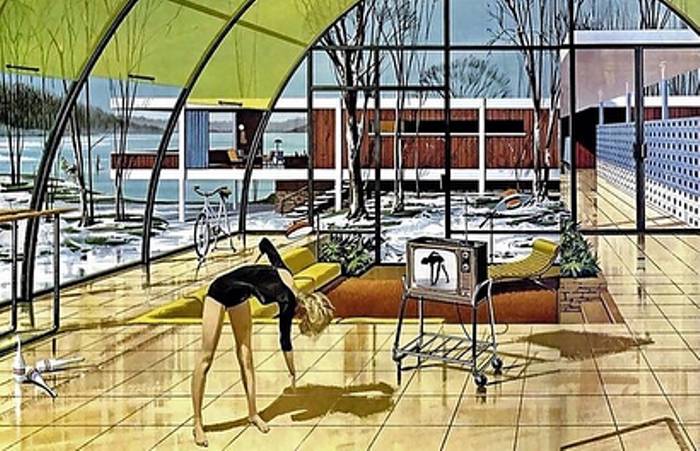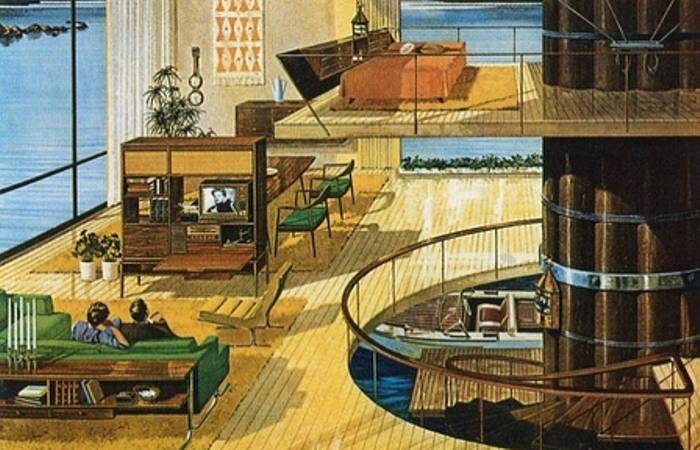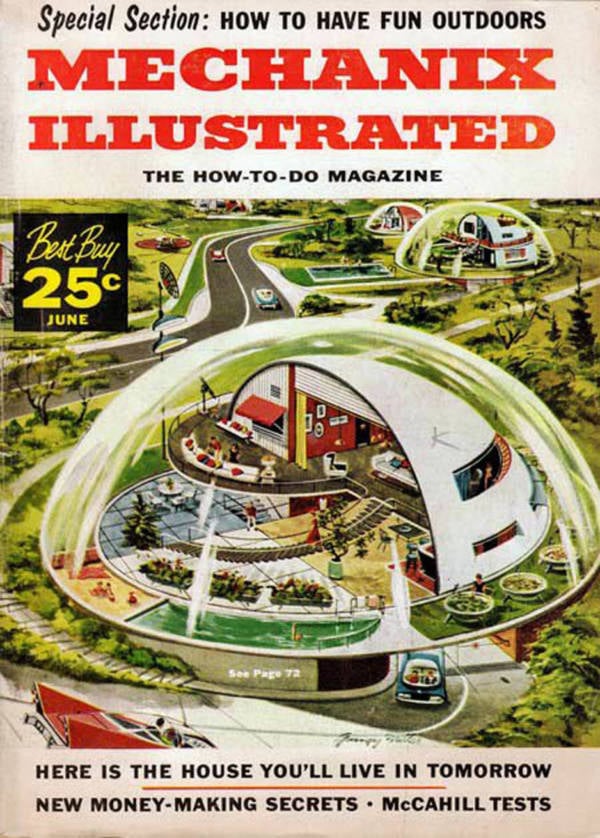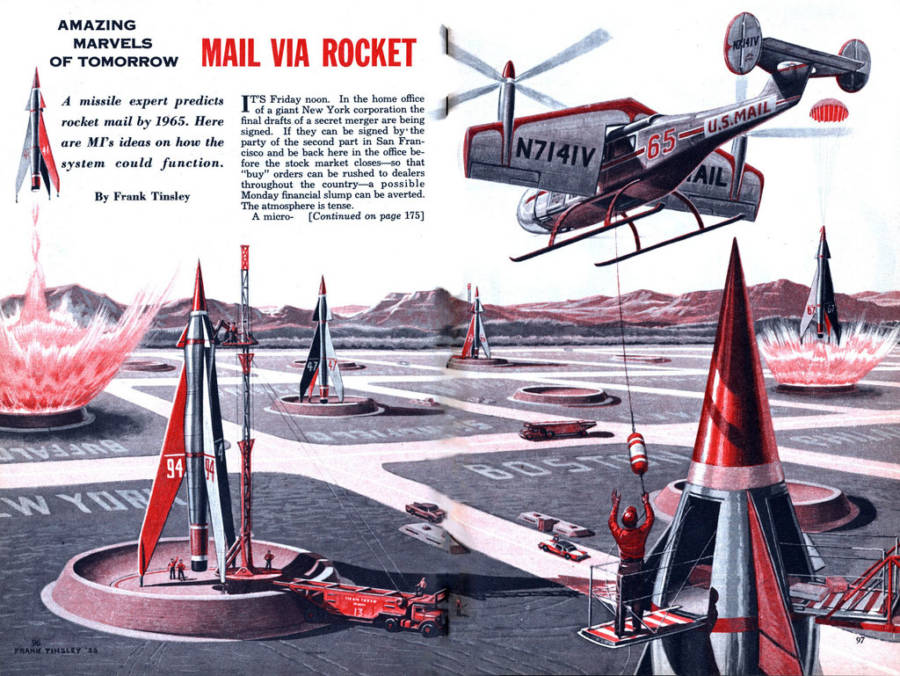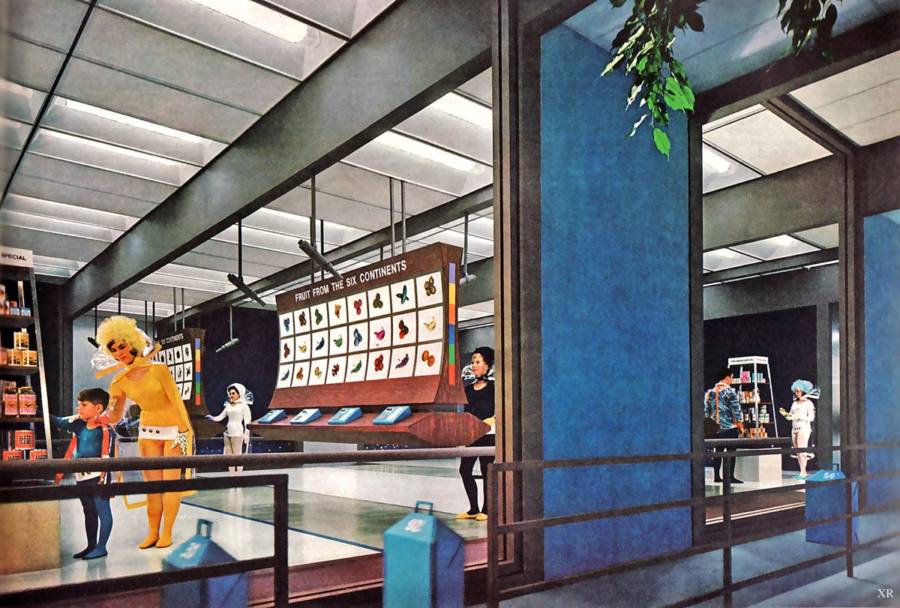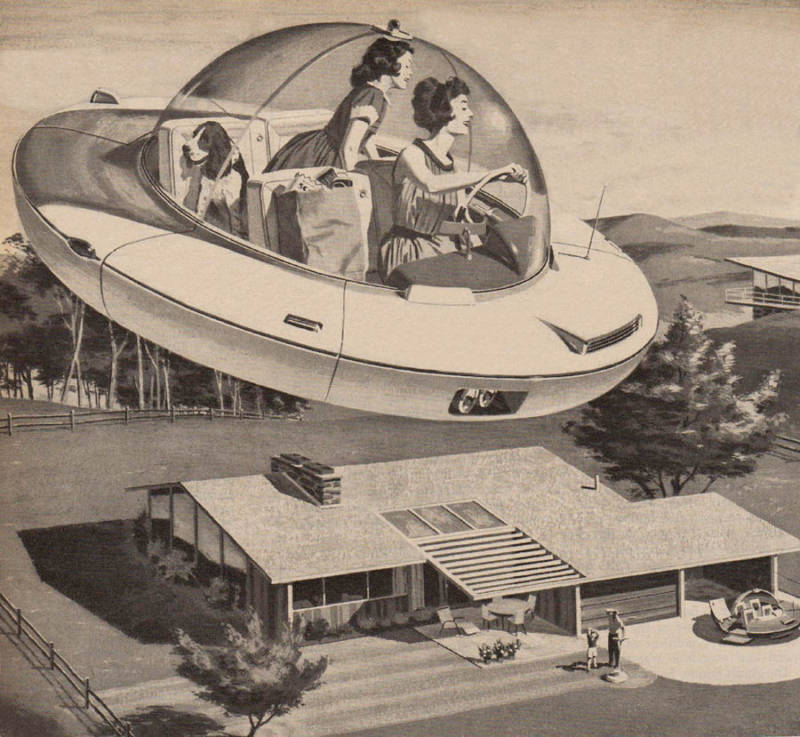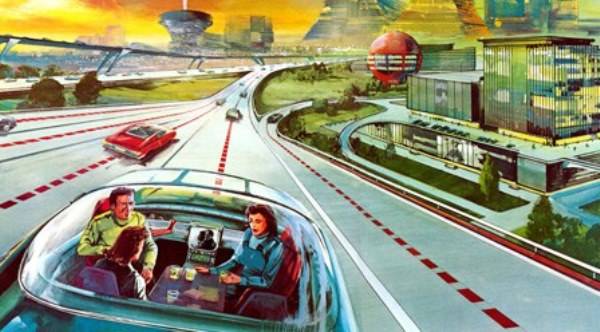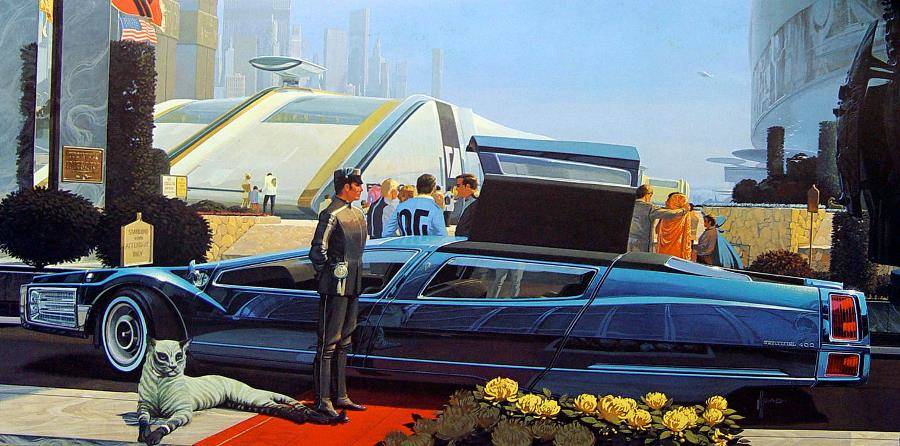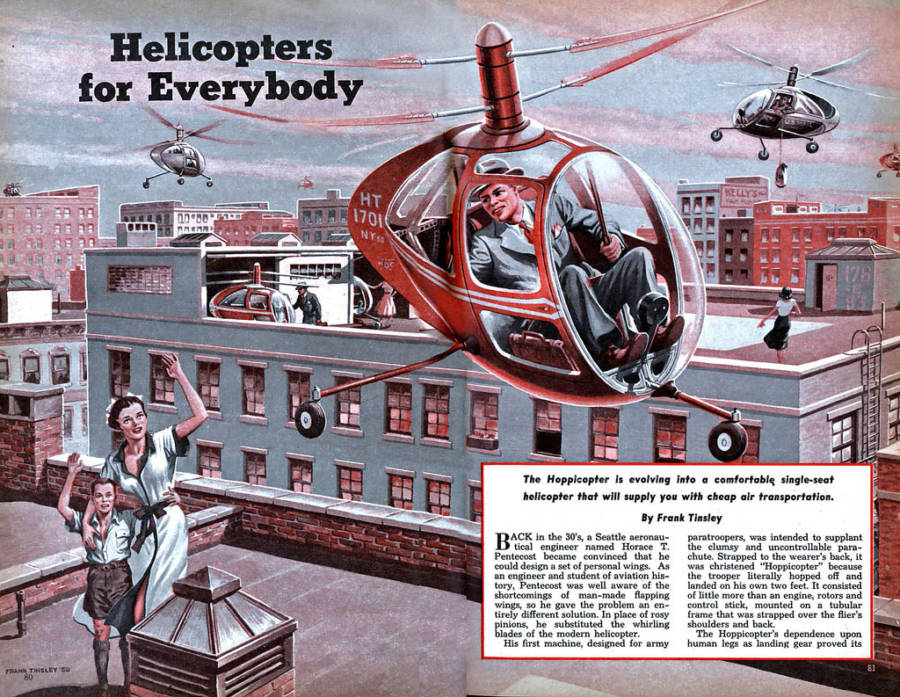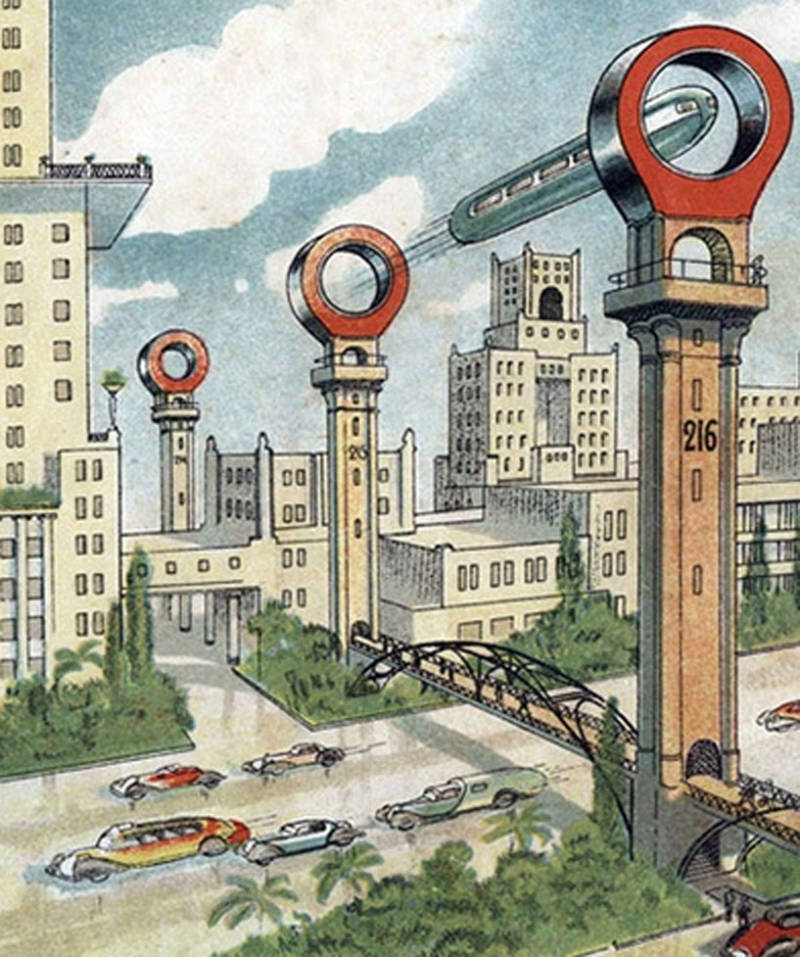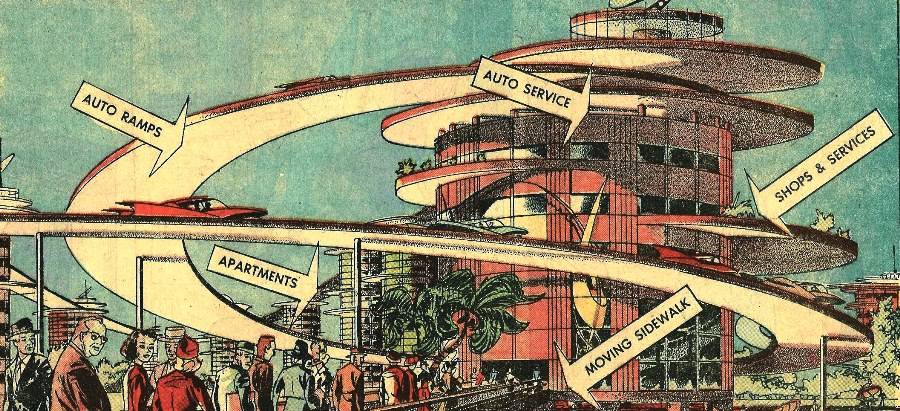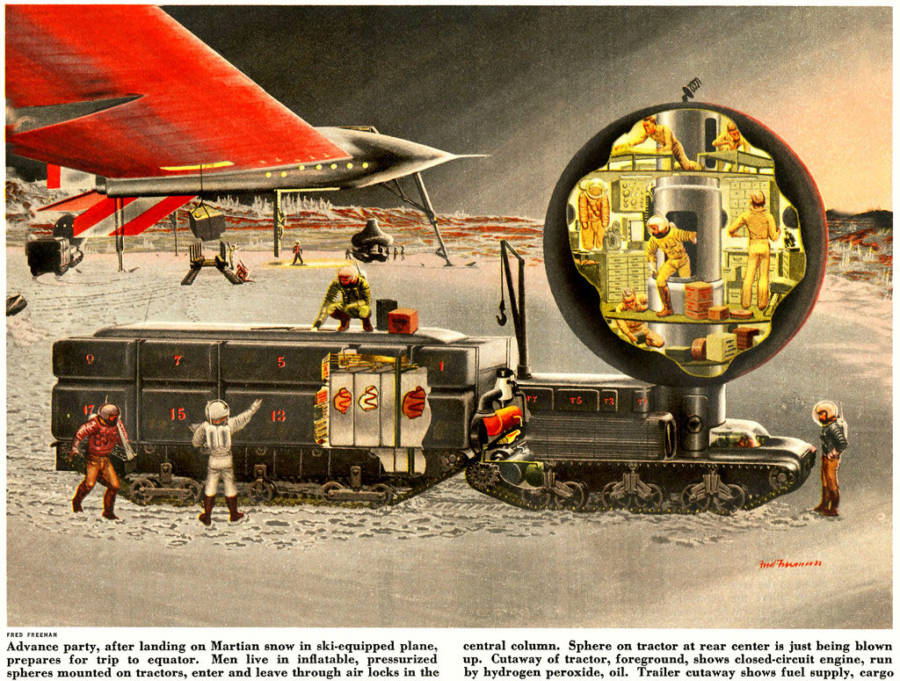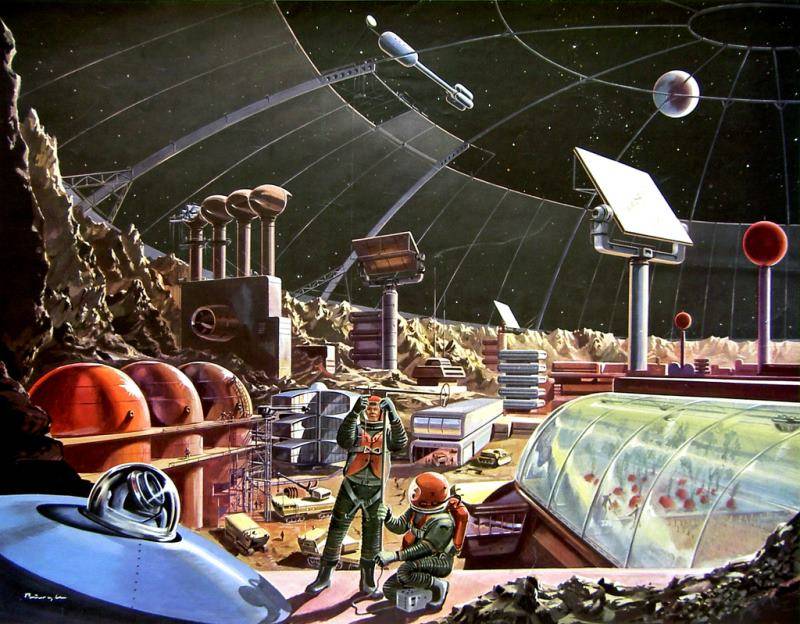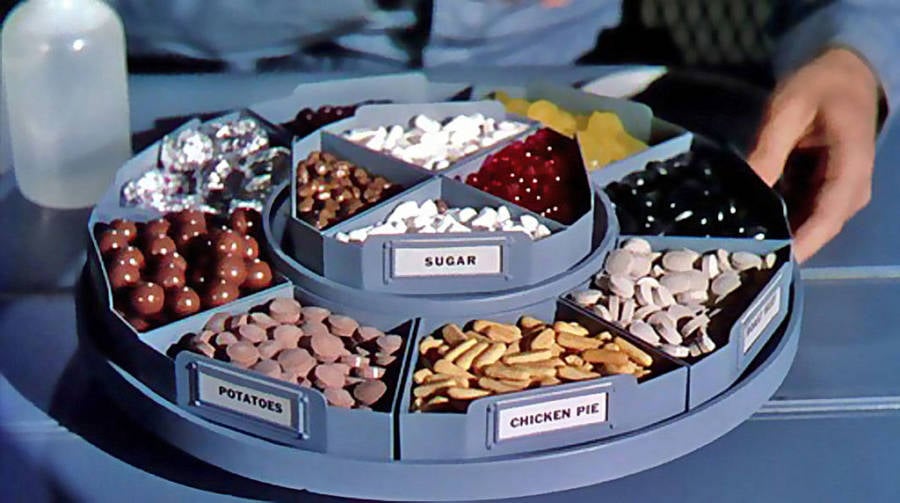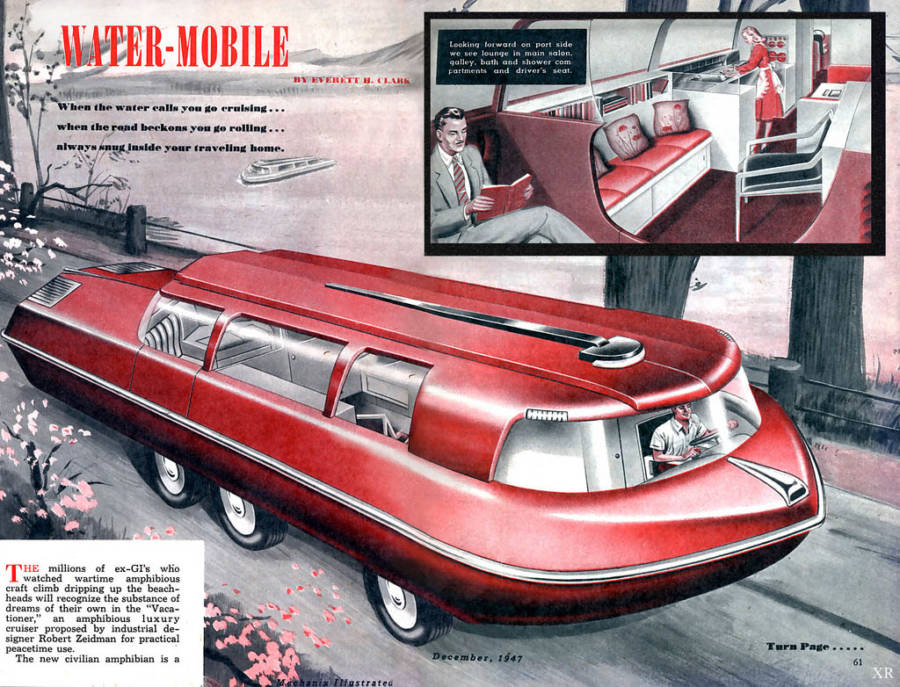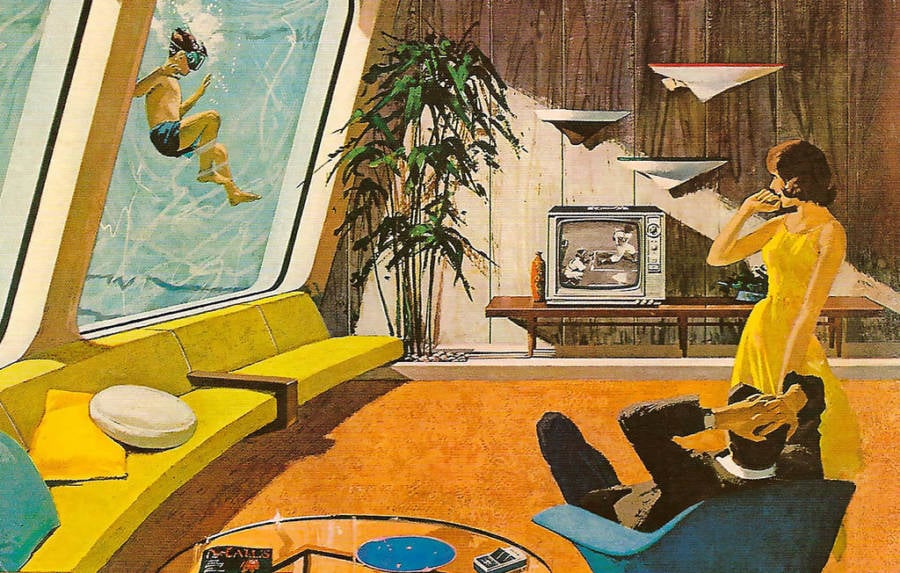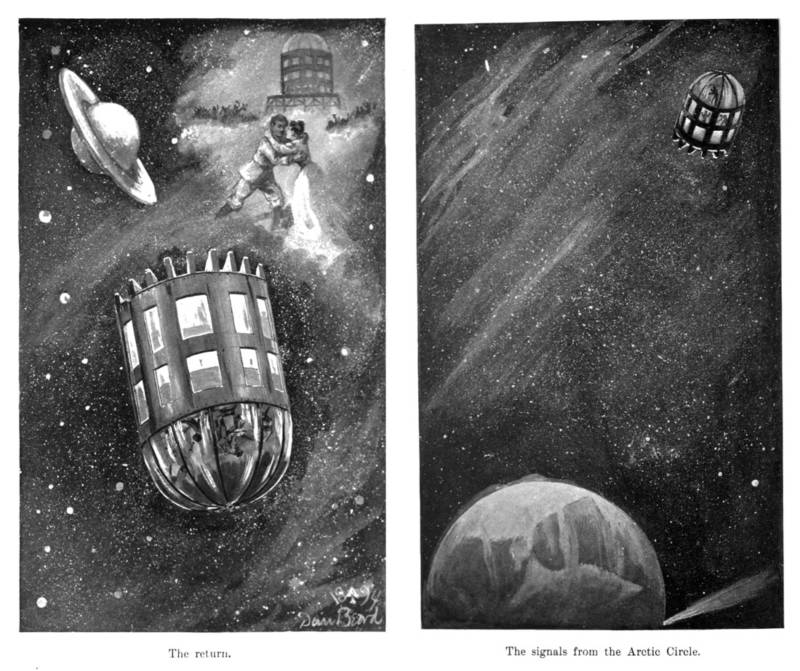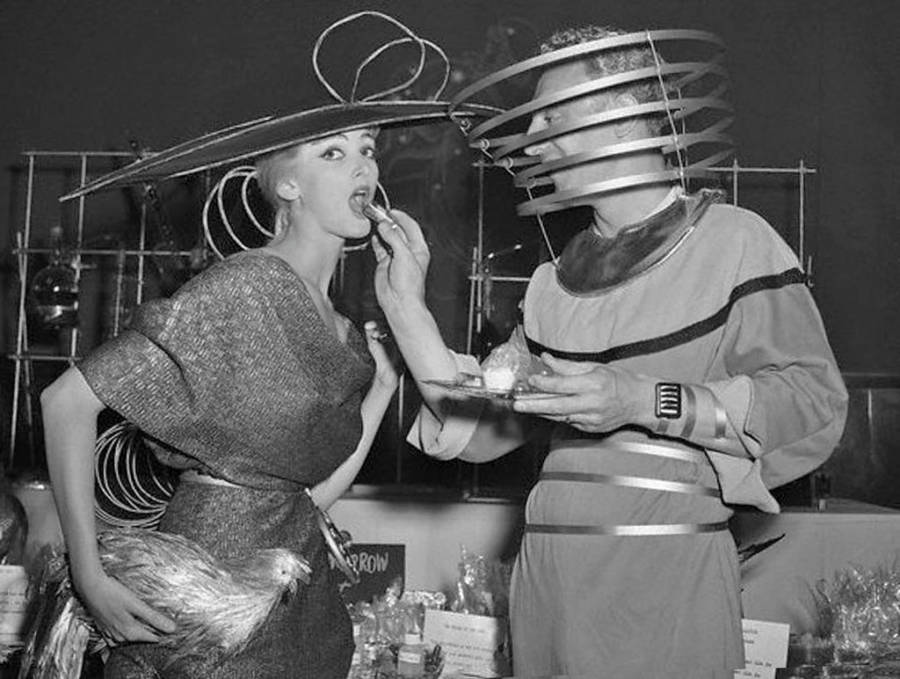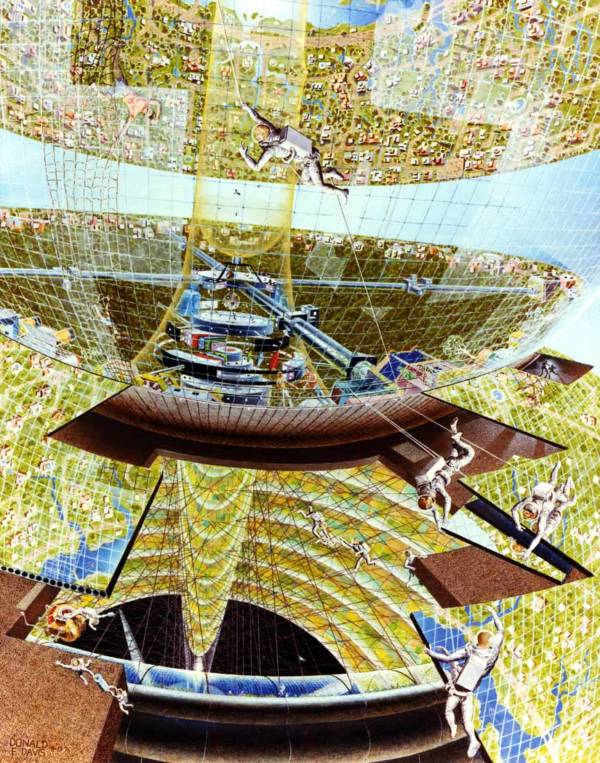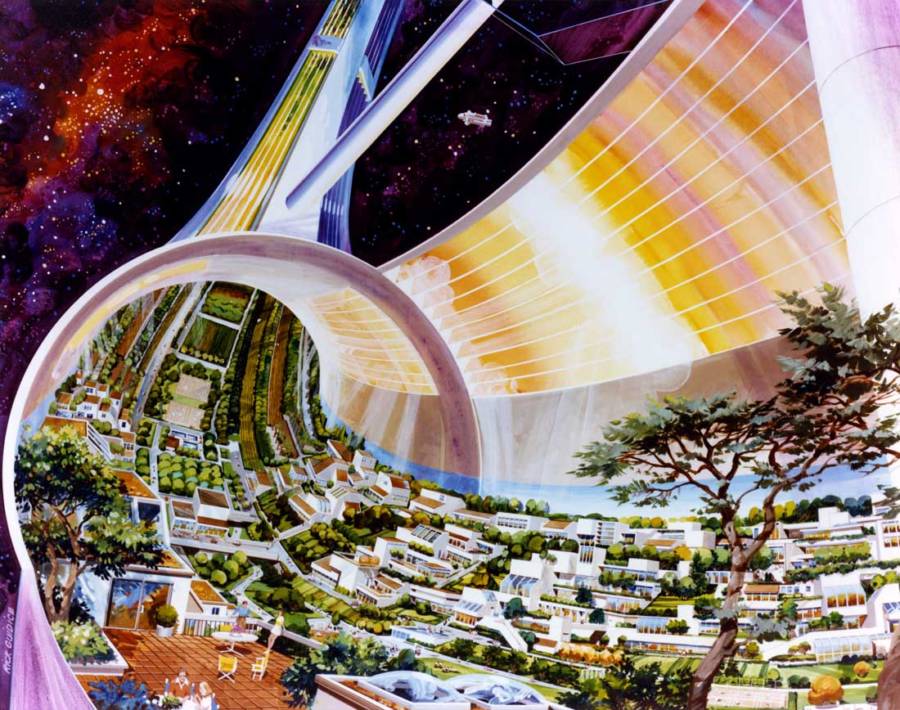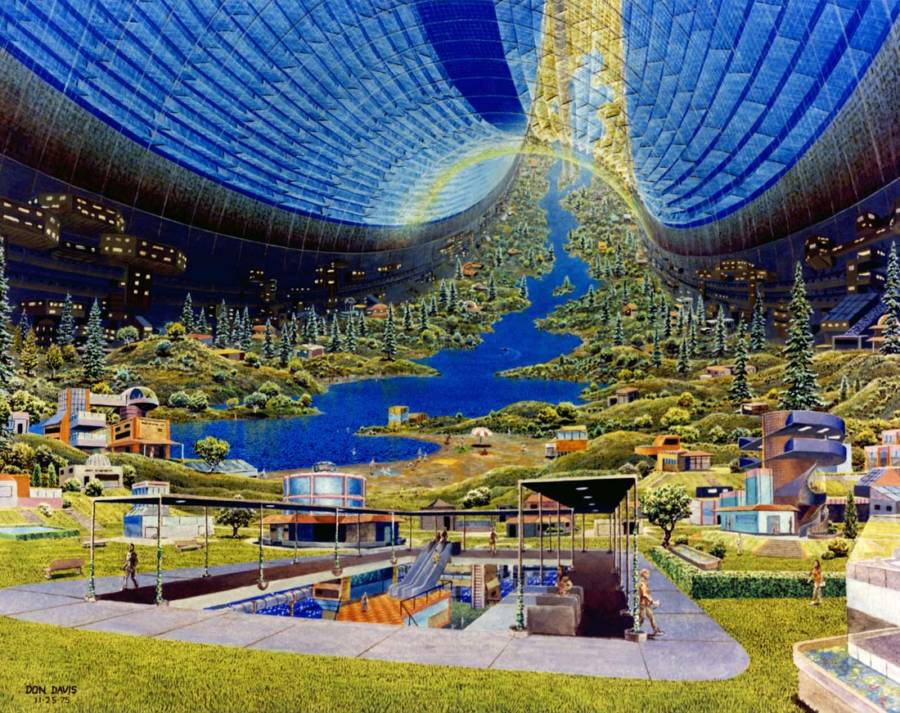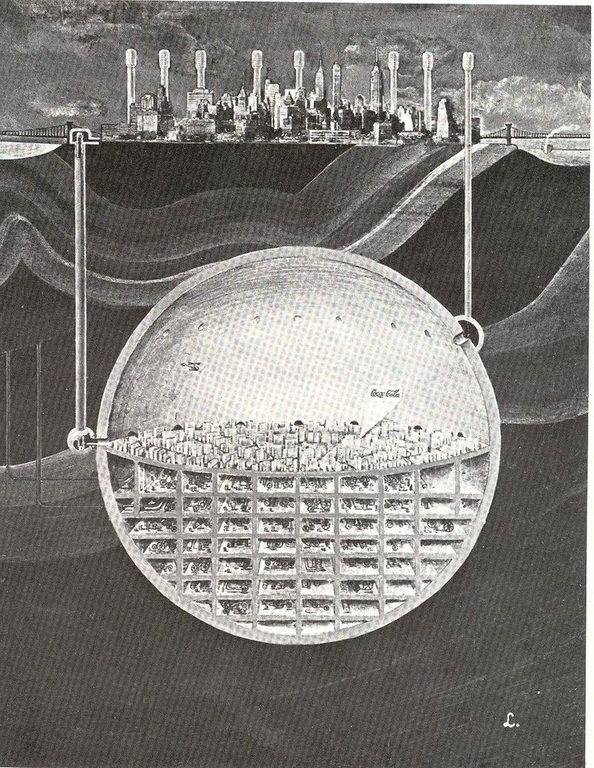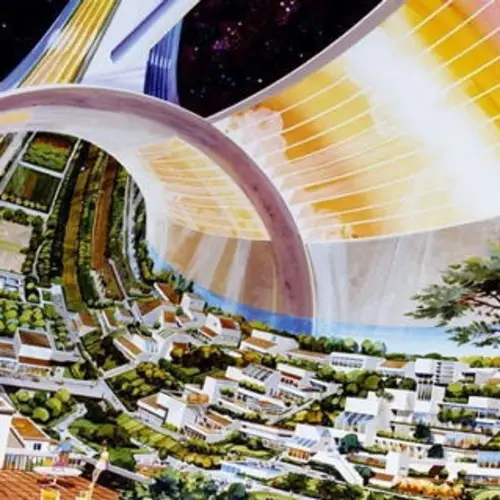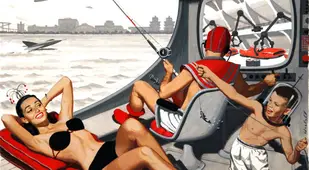From flying saucer rides to domestic living on the lunar surface, these gorgeous retrofuturism illustrations show how previous generations thought the future might look.
Retrofuturism is the past's vision of the future — that is, it's what the people of yesterday thought today would look like. Their ideas run the gamut from charmingly naïve and amusingly ambitious to alarmingly accurate, and they've inspired a movement in the present as artists, designers, musicians, and filmmakers channel the technological dreams of a bygone age.
Retrofuturism: The Past Imagines The Future
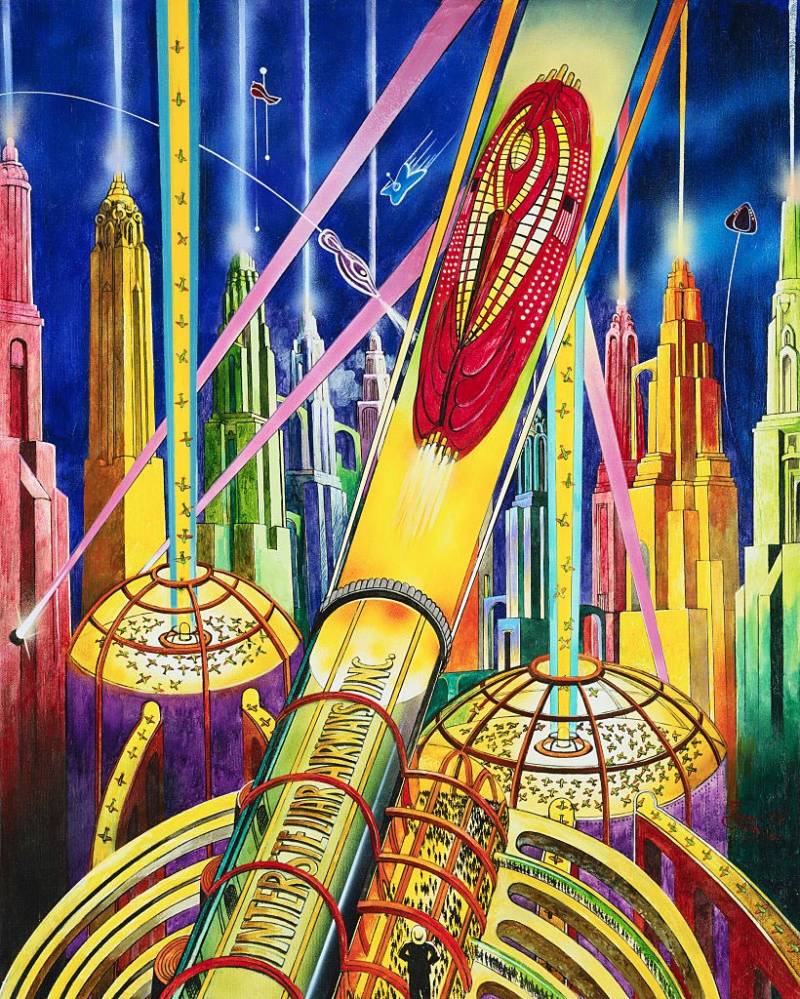

Forrest J. Ackerman Collection/CORBIS/Corbis via Getty ImagesPainting of futuristic transports in the city. Artist: Anton Brzezinski.
The term "retrofuturism" is a relatively recent one. It appeared in the wake of the technological advances of the 70s and 80s, when science made enormous strides — but not always in the directions the inhabitants of the early 20th century had anticipated. The dreams of the past began to look quaint and implausible in a way that many found nostalgic.
It makes sense that retrofuturism as a genre rose to popularity at the same time as dystopian science fiction and fantasy were garnering renewed interest. As the future was beginning to look like a stranger, scarier place than it once had, a new enthusiasm emerged for the sometimes comically rosy predictions of previous generations.
And what predictions they were.
If the retrofuturistic illustrations of the past are anything to judge by, the early 20th century had a yen for better transportation, much of it airborne. They dreamed of private helicopters, hover cars, dirigibles, and personal spaceships that float freely or along suspended highways.
Roads are magnetized hoops that rise hundreds of feet above the ground, shimmering glass tubes that wind their way through the city like Mario Kart's Rainbow Road, or space-age underground tunnels.
Domestic life, too, is radically different through the lens of retrofuturism. Busy commuters pop a pill that tastes just like a chicken pot pie — but without the inconvenience of having to make or even eat one.
Fashion favors tall plastic boots, skintight chrome, and PVC anything, and homes are often beautiful glass affairs (suggesting we've done away with both privacy and bricks). Some of them are on the moon.
Even the most conservative projections feature dramatically simplified domestic duties, like this 1960s video explaining a futuristic kitchen:
What Retrofuturism Looks Like
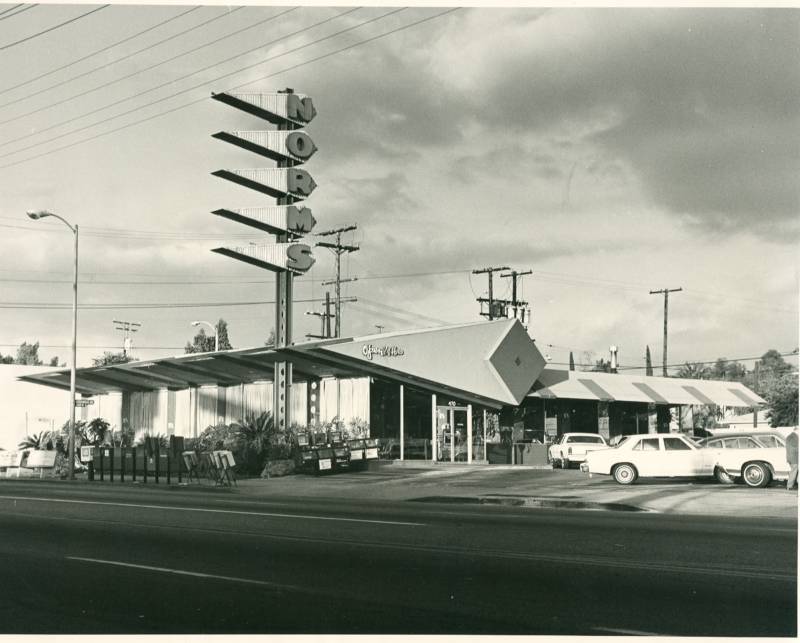

LA Conservancy ArchivesNorm's restaurant was built in 1957 in the Googie style so popular in retrofuturism — and this La Cienega branch is still open today.
Though many of the images most common to retrofuturism are laughable from the perspective of the present, the dreamers of the past got more than a few things right: self-driving cars, a common retrofuturistic fantasy, are close to fruition. Video conferencing and wrist accessories that play TV shows are everyday realities, and robots (or at least automated systems) already exist in many homes — and certainly in factories.
Retrofuturistic designs often feature Googie, Populuxe, and Doo Wop aesthetics, leaning heavily on popping neon colors, svelte steel, curvy geometric shapes, and as much glass as possible — a blend that has earned its own deeply appropriate name: Raygun Gothic.
There's also another side of retrofuturism that deals not with the past's view of the future, but rather with the present's view of the past. Writers and artists reimagine the past with technological advances from the future, creating a strange new past that never happened.
The most famous example of this kind of retrofuturism is steampunk, a genre of art and fiction that gifts old technologies (often steam power) with modern or near-modern capabilities in a historical setting, typically the Victorian era.
Retrofuturism In Popular Culture
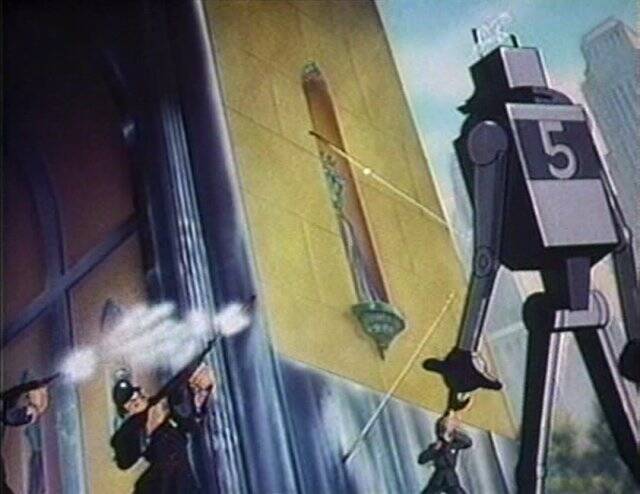

Wikimedia CommonsA still image from Superman: The Mechanical Monsters, the 1941 short that inspired the retrofuturistic classic Sky Captain and the World of Tomorrow.
The 2004 cult classic Sky Captain and the World of Tomorrow is a strong example of retrofuturism on the big screen. The movie sets a robot invasion in 1939 New York, and it's up to an intrepid reporter (Gwyneth Paltrow) and a fighter pilot (Jude Law) to defeat an evil German scientist with a doomsday device.
It should be noted that not all of retrofuturism is blindingly optimistic. Though nostalgia is a common theme, retrofuturistic stories do sometimes confront dystopian ideas, especially when set in a particularly bleak period of the past.
Terry Gilliam's 1985 Brazil, for example, paints a satirical picture of a consumer-driven dystopia where ineffective machines make for a mind-numbingly dull existence under the rule of a 1984-style totalitarian government.
Today, retrofuturism is on the rise. While previous decades have seen the movement confined to cult classics, its themes and iconic looks are becoming increasingly mainstream. Incredibles director Brad Bird cited retrofuturism as one of his influences, and it's not hard to see retro sensibilities in the look of the Pixar classic.
Video games, too, have taken an interest, notably the popular BioShock series, which was influenced, according to designer Ken Levine, in part by retrofuturistic works like George Orwell's 1984.
It's enough to make you wonder — what will the generations of tomorrow think when they look back on our visions of the future? What will they think about our dreams?
Want more illustrations from bygone ages like this retrofuturistic art? Check out this erotic art that proves people have always had sex on the brain. Then, read up on the disturbing art from the depressingly racist ads of decades past.


